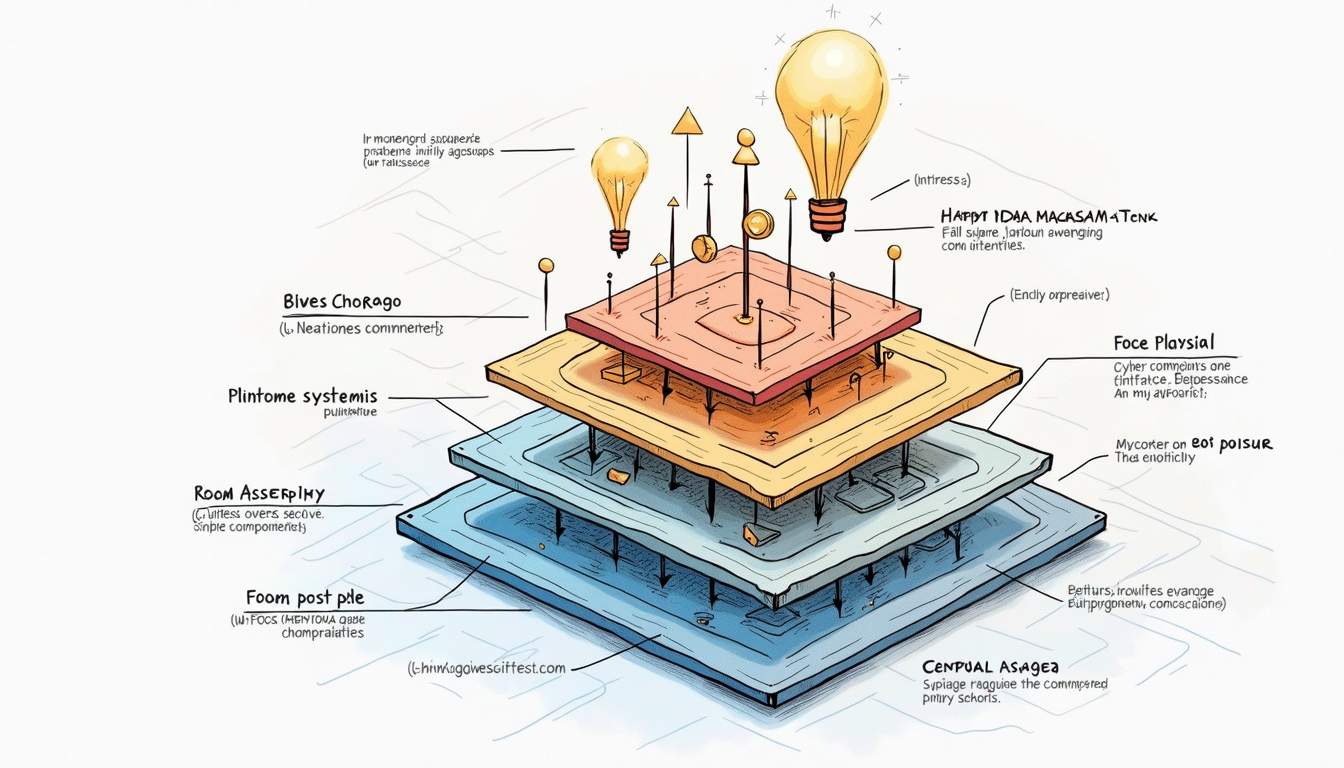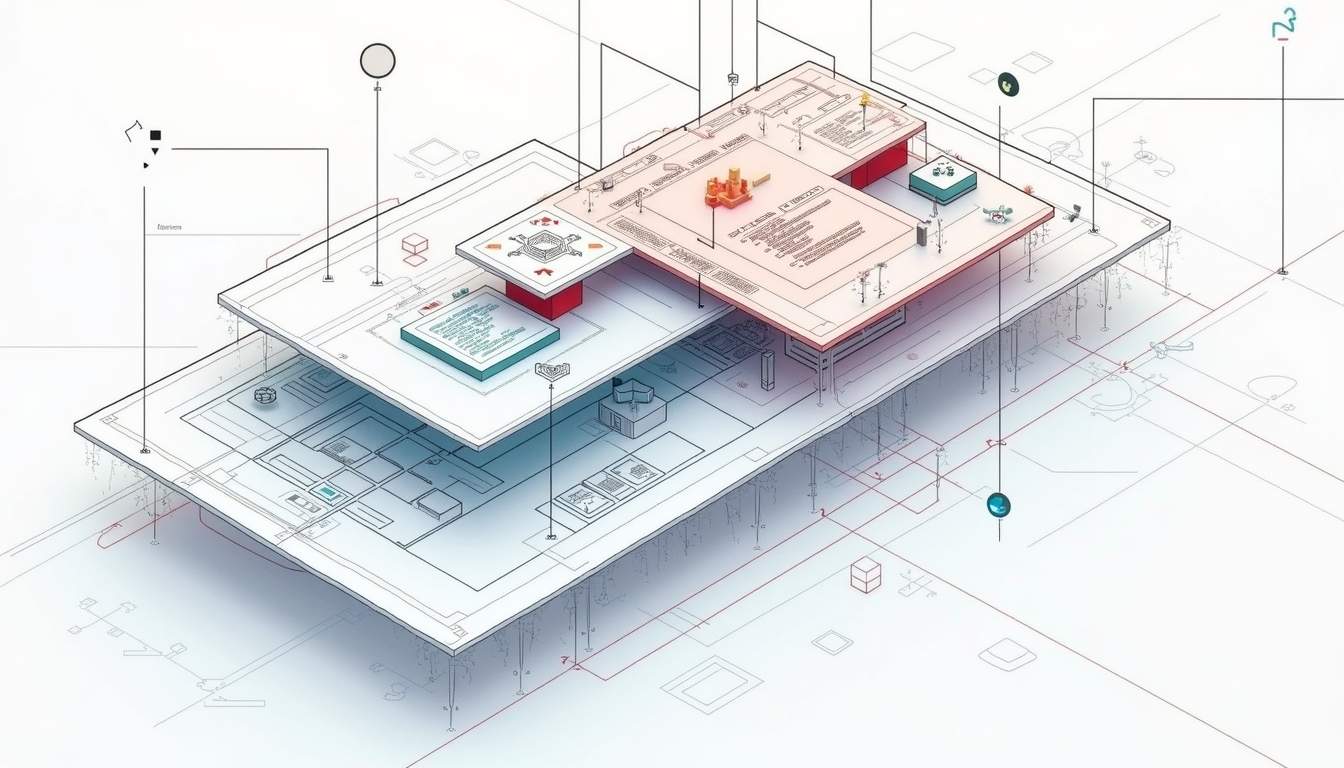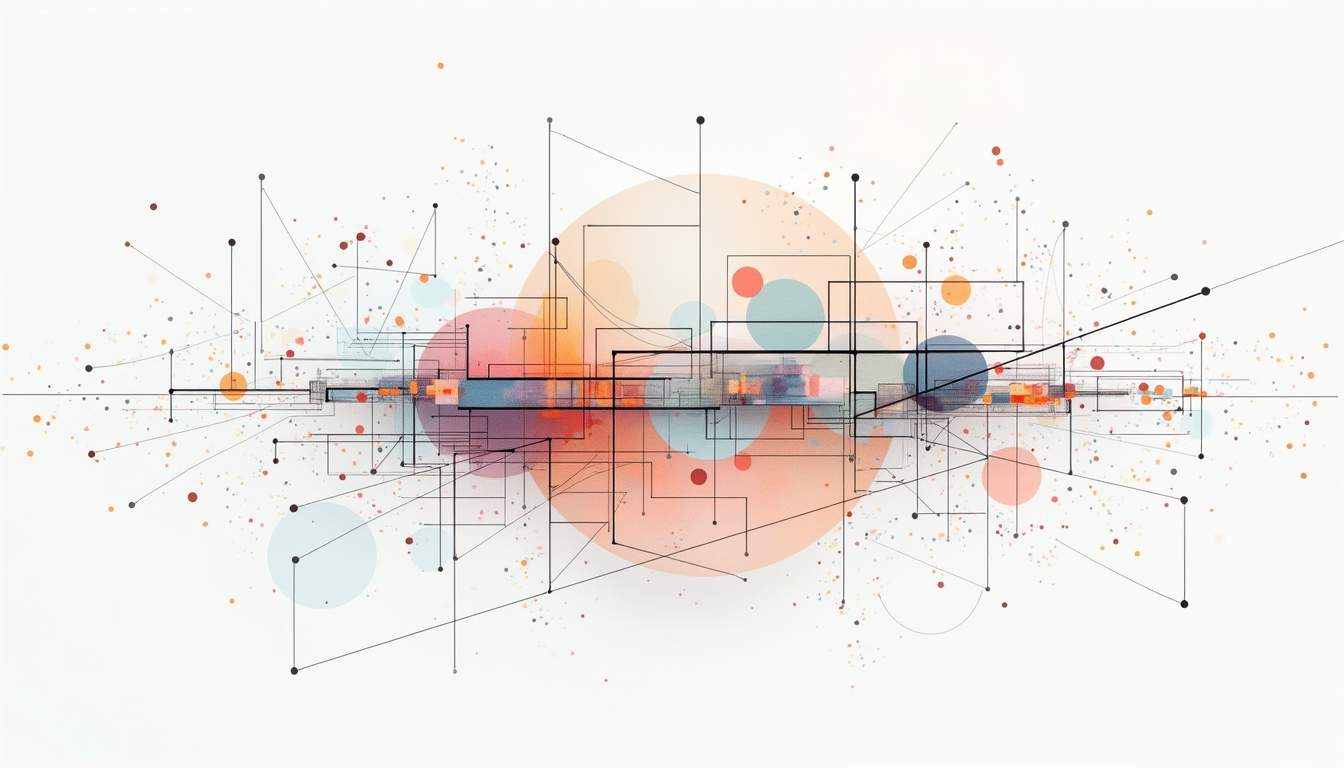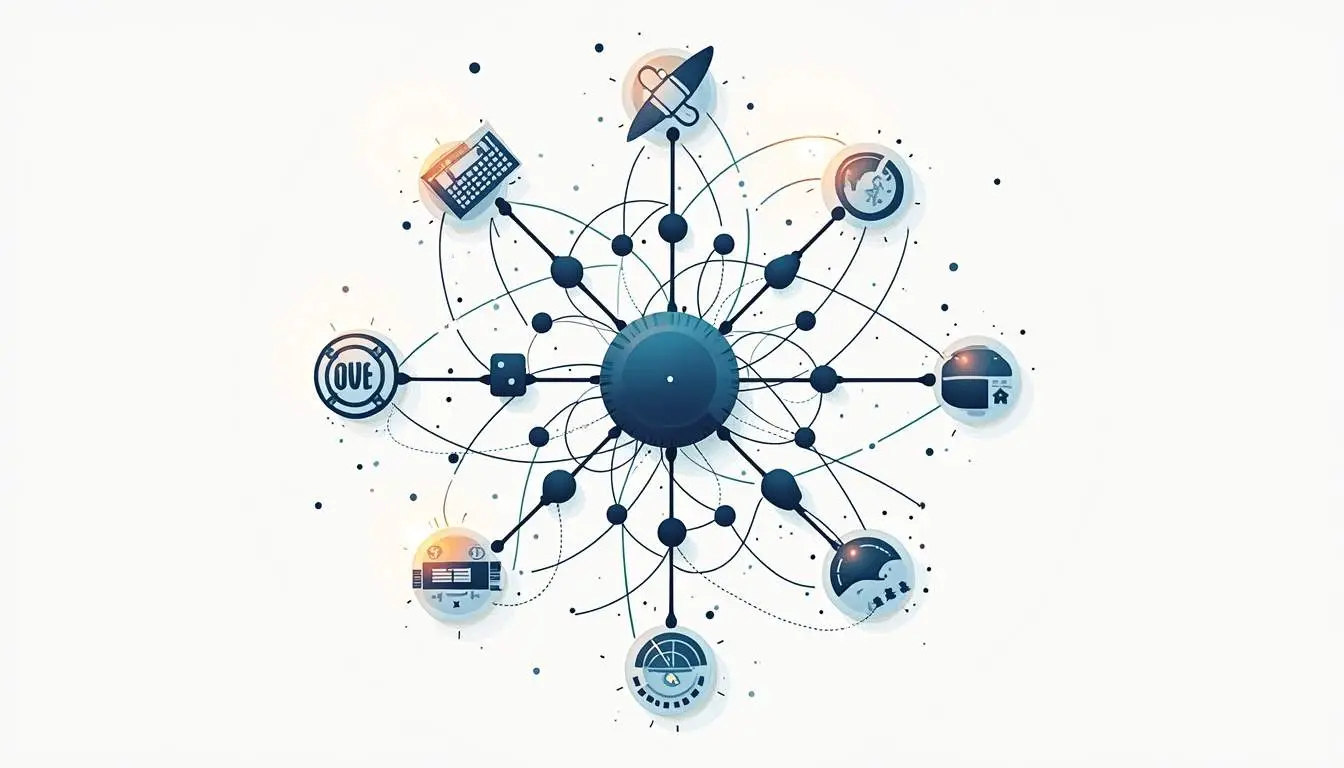Cyber-Physical Systems (CPS) represent a convergence of the physical and digital realms, where computing, networking, and physical processes intertwine to create intelligent systems. As these systems evolve, they increasingly resemble Systems of Systems (SoS), characterized by their complexity and interdependencies. This article delves into the architectural considerations and composition strategies for CPS as SoS, highlighting the challenges and opportunities that arise in this dynamic landscape.
Understanding Cyber-Physical Systems
Cyber-Physical Systems are integrated systems that combine computational elements with physical processes. They are designed to monitor and control the physical world through embedded computing, sensors, and actuators. The essence of CPS lies in their ability to interact with the environment, making real-time decisions based on data collected from various sources.

Key Characteristics of CPS
One of the defining features of CPS is their ability to operate autonomously. These systems can process data and make decisions without human intervention, which is crucial in applications such as autonomous vehicles, smart grids, and industrial automation. Additionally, CPS are often characterized by their adaptability; they can respond to changes in their environment or operational conditions, enhancing their resilience and efficiency.
Another important characteristic is the integration of communication networks. CPS rely on seamless data exchange between physical components and computational units, enabling them to function cohesively. This interconnectedness raises significant architectural considerations, particularly regarding data security, reliability, and scalability.
Applications of CPS
The applications of Cyber-Physical Systems are vast and varied. In healthcare, CPS can monitor patient vitals in real-time, providing critical data to healthcare professionals and enabling proactive interventions. In transportation, autonomous vehicles utilize CPS to navigate complex environments safely. Additionally, smart cities leverage CPS to optimize traffic flow, manage energy consumption, and enhance public safety.
As CPS continue to evolve, their applications are expected to expand further, driving innovation across multiple sectors. However, this growth also necessitates a deeper understanding of the architectural frameworks that underpin these systems.
Systems of Systems: A Conceptual Overview
Systems of Systems (SoS) refers to a collection of independent systems that interact and collaborate to achieve a common goal. Each system within an SoS retains its own management and operational autonomy, yet they work together to provide enhanced capabilities and functionalities. This framework is particularly relevant in the context of CPS, where multiple systems must coordinate to operate effectively.
Characteristics of Systems of Systems
One of the primary characteristics of SoS is their inherent complexity. The interactions between systems can lead to emergent behaviors that are not present in individual systems. This complexity poses significant challenges in terms of design, verification, and validation. Additionally, SoS are often dynamic, with systems being added or removed over time, further complicating the architecture.
Another key aspect of SoS is the need for interoperability. The systems involved must be able to communicate and share data effectively, which requires standardized protocols and interfaces. This interoperability is crucial for ensuring that the overall system functions as intended, especially in scenarios where real-time decision-making is essential.
Challenges in Managing SoS
Managing Systems of Systems presents several challenges, particularly in terms of governance and control. Since each system operates independently, establishing a unified management framework can be difficult. Moreover, the distributed nature of SoS can lead to issues related to data consistency, security, and fault tolerance.
Another challenge is the integration of legacy systems with newer technologies. As organizations adopt CPS and SoS architectures, they must consider how to incorporate existing systems without compromising functionality or performance. This often requires significant investment in both time and resources, as well as a thoughtful approach to system design.
Architectural Considerations for CPS as SoS
When designing Cyber-Physical Systems as Systems of Systems, several architectural considerations must be taken into account. These considerations are crucial for ensuring that the systems operate effectively and can adapt to changing conditions.

Modularity and Scalability
One of the foundational principles of CPS architecture is modularity. By designing systems in a modular fashion, individual components can be developed, tested, and deployed independently. This approach not only facilitates easier upgrades and maintenance but also enhances scalability, allowing organizations to expand their systems as needed.
Scalability is particularly important in the context of CPS as SoS, where the ability to integrate new systems or components can significantly impact overall performance. A scalable architecture enables organizations to respond to evolving requirements and technological advancements without overhauling the entire system.
Interoperability and Standards
Interoperability is critical for the successful operation of CPS as SoS. Establishing standardized protocols and interfaces ensures that different systems can communicate effectively, share data, and collaborate seamlessly. This is especially important in environments where multiple stakeholders are involved, such as in smart cities or industrial ecosystems.
Organizations must prioritize the adoption of industry standards to facilitate interoperability. By aligning with established frameworks, they can reduce integration costs and enhance the overall functionality of their systems. Additionally, embracing open standards can foster innovation and collaboration across different sectors.
Security and Resilience
As CPS become increasingly interconnected, security concerns also escalate. Cyber threats pose significant risks to the integrity and functionality of these systems. Therefore, incorporating robust security measures into the architectural design is paramount. This includes implementing encryption, access controls, and continuous monitoring to detect and respond to potential threats.
Resilience is another critical consideration. CPS must be designed to withstand failures or disruptions, whether they arise from cyberattacks, hardware malfunctions, or environmental factors. This can be achieved through redundancy, fault tolerance, and adaptive algorithms that allow the system to recover from adverse conditions.
Composition Strategies for CPS as SoS
Effective composition strategies are essential for integrating individual systems into a cohesive Cyber-Physical System. These strategies must account for the unique characteristics of each system while ensuring that they work together harmoniously.

Service-Oriented Architecture (SOA)
Service-Oriented Architecture (SOA) is a popular approach for composing CPS as SoS. In this framework, individual components are treated as services that can be accessed and utilized by other systems. This modular approach allows for greater flexibility and adaptability, as services can be modified or replaced without affecting the overall system.
SOA also facilitates interoperability, as services can be designed to communicate using standardized protocols. This is particularly beneficial in environments where multiple systems from different vendors must collaborate. By adopting SOA principles, organizations can streamline the integration process and enhance system functionality.
Model-Driven Engineering (MDE)
Model-Driven Engineering (MDE) offers another effective strategy for composing CPS as SoS. This approach focuses on creating abstract models of systems that can be transformed into executable implementations. By using models to represent system components and their interactions, organizations can gain insights into system behavior and identify potential issues early in the design process.
MDE also supports the automation of various development tasks, reducing the time and effort required to integrate systems. This can be particularly advantageous in complex CPS environments, where rapid deployment and iteration are essential for success.
Event-Driven Architecture (EDA)
Event-Driven Architecture (EDA) is a composition strategy that emphasizes the importance of events in system interactions. In this framework, systems communicate through events, which can trigger actions or responses in other components. This approach allows for greater responsiveness and adaptability, as systems can react to changes in real-time.
EDA is particularly well-suited for CPS, where real-time data processing and decision-making are crucial. By adopting an event-driven approach, organizations can enhance the overall performance and efficiency of their systems, ensuring that they can respond effectively to dynamic conditions.
Future Directions in CPS as SoS
The landscape of Cyber-Physical Systems as Systems of Systems is continually evolving, driven by advancements in technology and changing societal needs. As organizations seek to leverage the benefits of CPS, several future directions are emerging.
Artificial Intelligence and Machine Learning
Artificial Intelligence (AI) and Machine Learning (ML) are set to play a transformative role in the development of CPS. By integrating AI and ML algorithms, these systems can enhance their decision-making capabilities, enabling them to learn from data and adapt to changing conditions autonomously. This can lead to improved efficiency, reduced operational costs, and enhanced user experiences.
Moreover, AI can help address some of the challenges associated with managing SoS, such as optimizing resource allocation and predicting system behavior. As these technologies continue to advance, their integration into CPS will likely become more prevalent, driving further innovation in the field.
Edge Computing
Edge computing is another trend that is gaining traction in the realm of CPS. By processing data closer to the source, edge computing reduces latency and bandwidth usage, enabling real-time decision-making. This is particularly important in applications where immediate responses are critical, such as in autonomous vehicles or industrial automation.
Furthermore, edge computing can enhance security by minimizing the amount of sensitive data transmitted over networks. By processing data locally, organizations can reduce their exposure to cyber threats, contributing to the overall resilience of their systems.
Collaborative Ecosystems
The future of CPS as SoS will likely involve the establishment of collaborative ecosystems, where multiple stakeholders come together to share resources, knowledge, and capabilities. This collaborative approach can drive innovation and accelerate the development of new applications and services.
As organizations recognize the value of collaboration, they may form partnerships with other entities, including academia, industry, and government. These partnerships can facilitate knowledge exchange and foster the development of standardized practices, ultimately benefiting the entire ecosystem.
Conclusion
Cyber-Physical Systems, as Systems of Systems, present both significant opportunities and challenges. As organizations navigate this complex landscape, architectural considerations and composition strategies will play a vital role in ensuring the effectiveness and resilience of these systems. By embracing modularity, interoperability, security, and innovative composition approaches, organizations can harness the full potential of CPS, driving advancements across various sectors.
Looking ahead, the integration of AI, edge computing, and collaborative ecosystems will further shape the future of CPS as SoS. As these technologies continue to evolve, they will unlock new possibilities, paving the way for smarter, more efficient systems that can adapt to the ever-changing demands of the modern world.
Take Control of Your Cyber-Physical Systems with Cybersort
As you consider the future of your organization’s Cyber-Physical Systems, remember that the right partner can make all the difference. Cybersort offers the tools and expertise to help you document, structure, and manage the software, assets, and data connections critical to your operations. With our support, you can achieve safer operations, robust cybersecurity, and a seamless digital transformation. Don’t let complexity hold you back. Book a discovery call with Cybersort today and take the first step towards mastering your digital infrastructure.


